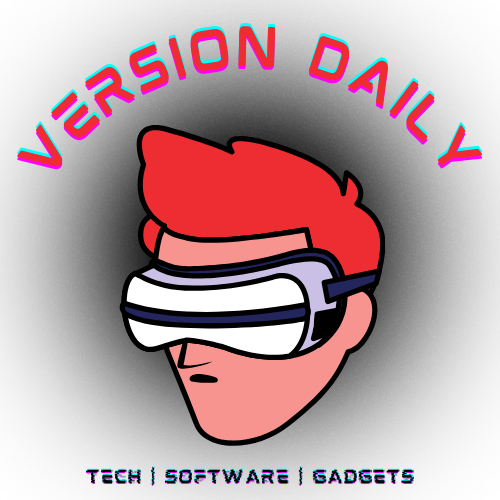Fed up with AI censorship and data harvesting? You’re not alone. A growing movement of developers, businesses, and privacy advocates are abandoning centralized AI services for alternatives that put control back in users’ hands. From models running entirely on your laptop to encrypted chat services and ambitious decentralized networks, the options keep multiplying, and some actually work.
- Local AI models now run smoothly on regular laptops, giving you ChatGPT-level responses without any internet connection
- OpenRouter lets you pick which AI provider handles your data, with automatic fallbacks when services go down
- New encrypted services like Maple AI use secure enclaves so even the company can’t read your chats
- ASI:One goes beyond chatting to actually complete tasks, coordinating specialized agents that can book services, plan routes, and execute multi-step actions
Your Computer, Your Rules: The Local AI Revolution
Here’s what surprised me when I first tried it: you can run AI as capable as ChatGPT 3.5 on a regular MacBook Air. No cloud subscription. No data leaving your machine. Just download an app, pick a model, and start chatting.
The shift happened fast. Two years ago, running AI locally meant wrestling with command lines and Python environments. Today? Tools like GPT4All make it dead simple. Download the app, click on Llama 3.2 or Mistral, wait for it to download (usually a few gigabytes), and you’re done. The whole process takes maybe five minutes.
What really sells local AI is the offline capability. I was on a flight recently, needed to draft a technical document, and my local Llama model handled it perfectly. No “searching for network” messages. No worrying about Wi-Fi passwords. The AI just works, anywhere, anytime.
For professionals handling sensitive information, this changes everything. Lawyers can discuss case strategy without worrying about client confidentiality. Doctors can analyze patient data without HIPAA concerns. Journalists can work with sources knowing nothing gets logged on someone else’s server.
The hardware requirements keep dropping too. Most modern laptops with 8GB of RAM can handle smaller models like Phi-3 or Gemma 2B. Got 16GB? You’re looking at running models that handle complex reasoning, code generation, and detailed analysis. The secret sauce is quantization, basically compressing models to run efficiently without losing much quality. A model that originally needed 32GB might run fine in 8GB after quantization.
Apple device owners get some particularly slick options. Private LLM charges a one-time fee (around $10) and gives you dozens of models that run directly on iPhones and iPads. The app leverages Apple’s Neural Engine, so even older phones can deliver surprisingly fast responses. Users consistently report that models like SOLAR 10.7B feel almost as capable as cloud services for everyday writing and coding tasks.
LM Studio and Ollama round out the major players, each with different strengths. LM Studio feels like ChatGPT’s interface but runs everything locally. Ollama appeals to developers who prefer command-line tools and want to integrate AI into their workflows. Both are free, both work great.
Pick Your Provider: How OpenRouter Changes the Game
Not everyone can go fully local. Maybe you need GPT-5’s thinking mode, or Claude’s massive context window, or your laptop just isn’t powerful enough. OpenRouter offers a middle ground: use cloud AI, but on your terms.
Think of it as a smart switchboard for AI services. Instead of being locked into OpenAI or Anthropic, you connect to OpenRouter, which then routes your requests to any of 50+ providers hosting hundreds of models. The platform recently raised $40 million at a $500 million valuation, with over a million developers already using it.
The killer feature? Control. You can filter providers by their data policies, ensuring your prompts only go to companies that don’t store or train on user data. Set your preferences once, and OpenRouter automatically enforces them. If you opt out of training data collection, the platform won’t route to any provider that might use your prompts for model improvement.
But the real magic happens when things go wrong. OpenAI goes down? Your request automatically routes to Anthropic. Anthropic hits rate limits? It tries Mistral. This automatic fallback system means your AI keeps working even when individual providers don’t. For businesses, this eliminates the dreaded “ChatGPT is at capacity” message that kills productivity.
Pricing gets interesting too. Use the “:floor” tag on any model, and OpenRouter finds the cheapest provider. Need speed? Add “:nitro” to prioritize fast providers. The platform constantly monitors provider performance and adjusts routing based on real-time metrics.
There’s also a clever load-balancing system at work. If Provider A costs $1 per million tokens and Provider C costs $3, the system weights requests so Provider A gets about 9 times more traffic. But if Provider A starts having issues, traffic shifts to maintain reliability. You get the best price without sacrificing uptime.
For developers and businesses, OpenRouter solves vendor lock-in. Build your application once using their API, and you can switch between providers without changing code. If a provider changes policies, raises prices, or quality drops, just update your routing preferences. Your app keeps working with a different backend.
Encrypted by Design: Maple AI’s Privacy-First Approach
Maple AI takes a completely different approach. Instead of letting you choose providers or run locally, it encrypts everything end-to-end. The company literally cannot read your conversations, even if they wanted to, or if someone forced them to.
The technical implementation uses AWS Nitro Enclaves, hardware-isolated environments with encrypted memory. Your data gets encrypted on your device, travels encrypted to their servers, and only gets decrypted inside these secure enclaves. Even someone with root access to Maple’s servers couldn’t read your chats.
What makes this verifiable, not just another privacy promise, is attestation. You can cryptographically verify that the code running in the enclave matches the open-source code Maple publishes. No trust required. You can mathematically prove your data stays private.
The practical benefits become obvious for certain use cases. Company executives discuss strategy without worrying about leaks. Healthcare workers get AI assistance while maintaining patient confidentiality. People explore personal topics without creating a permanent record somewhere.
Maple currently runs Llama 3.1 70B, offering free users 10 chats per week. Paid plans start at $5.99 monthly for heavier usage. Your chats sync across devices while staying encrypted, combining cloud convenience with local-level privacy.
The underlying platform, OpenSecret, is open source. Developers can build their own encrypted applications using the same infrastructure. It handles the complex parts like key management, encrypted sync, and secure compute while presenting a simple API.
AI That Actually Does Things: The ASI Alliance’s Agentic Push
While local models and encrypted services solve today’s privacy problems, the Artificial Superintelligence Alliance aims bigger: building AI that doesn’t just talk, but acts.
The alliance formed when three major projects merged: Fetch.ai, SingularityNET, and Ocean Protocol, later joined by CUDOS. Together, they’re developing something different from typical chatbots. Their ASI:One model doesn’t just answer questions. It coordinates with specialized agents to complete real tasks.
Here’s an example that shows the difference. Tell most AI assistants “I’m at the Eiffel Tower, my EV needs charging, and I have a meeting at Palais Garnier in 2 hours with Madelyn,” and they’ll give you suggestions. Maybe draft an email. List some charging stations. ASI:One actually executes: it finds the optimal charging station, calculates the route, books the charger if possible, and sends a professional message to Madelyn, all automatically.
The technical architecture makes this possible through what they call MoM (Mixture of Models) and MoA (Mixture of Agents). Instead of one giant model trying to do everything, specialized agents handle specific tasks. A navigation agent plans routes. A communication agent drafts messages. A scheduling agent manages time constraints. ASI:One orchestrates them all.
ASI-1 Mini, their first public model, runs on just two GPUs yet matches industry leaders on many benchmarks. It particularly excels at medical sciences, logical reasoning, and business applications. The efficiency comes from only activating the specific models and agents needed for each task, rather than running everything through one massive model.
The Web3 integration adds another layer. Through the uAgents framework, developers can deploy autonomous agents that search, transact, and make decisions independently. These aren’t just chatbots. They’re programs that can book hotels, optimize energy grids, or manage supply chains without constant human oversight.
DeltaV, their natural language interface, translates human requests into agent actions. It evaluates available agents based on performance history and specialization, then routes tasks accordingly. The whole system runs on the Fetch.ai blockchain, ensuring transparency about what agents do and how they’re compensated.
You can try ASI:One through their web interface or mobile apps (iOS and Android). The Knowledge Graph mode is particularly interesting, creating persistent, structured memory that evolves over time. Upload complex documents, and the system transforms them into recallable knowledge that improves with use.
Making the Switch: Practical First Steps
Want to try these alternatives? Start small. Download GPT4All or LM Studio and run a local model for a day. See what tasks it handles well and where you still need cloud services. Most people find local AI covers 70-80% of their needs.
For cloud AI with more control, create a free OpenRouter account. Experiment with different providers and routing options. Try “:floor” routing to minimize costs, or set strict data policies to avoid providers that train on user data. The automatic fallbacks alone might justify switching.
If maximum privacy matters more than model selection, test Maple AI’s free tier. Ten weekly chats let you experience truly private AI without commitment. The verification tools let you confirm their privacy claims yourself, rare in this industry.
Curious about agentic AI? Visit asi1.ai to try ASI:One. Start with simple requests to understand how it differs from traditional chatbots. Watch how it breaks down complex tasks into agent actions. The mobile apps make experimentation easy.
The truth about AI alternatives? No single option matches Big Tech’s combination of capability, convenience, and cost. Local models can’t touch GPT-4’s reasoning. OpenRouter still depends on centralized providers. Maple focuses on chat, not broader AI tools. ASI:One’s agent ecosystem is still developing.
But that misses the point. These alternatives prove you don’t have to accept the false choice between powerful AI and personal privacy. They demonstrate that different approaches work for different needs. Local for offline and sensitive work. Routed for flexibility and reliability. Encrypted for maximum privacy. Agentic for actual task completion.
As AI weaves deeper into daily life, having options matters more than having the “best” option. Whether you’re a privacy advocate, a business handling sensitive data, or someone who just wants AI that works offline, these tools offer real alternatives to the walled gardens.
Big Tech’s AI monopoly isn’t ending tomorrow. But for the first time, cracks are showing in the walls. And through those cracks, people are finding their way to AI that respects their choices, protects their data, and works on their terms.



